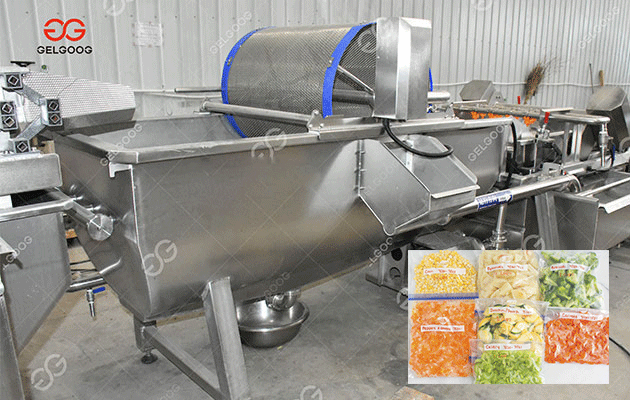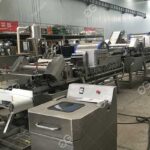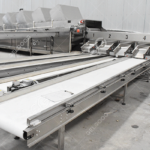Fresh-cut produce, often found in supermarket aisles and on restaurant plates, has become increasingly popular in recent years. This convenient option offers consumers a quick and healthy way to enjoy fruits and vegetables without the hassle of washing, peeling, and chopping. But have you ever wondered how fresh-cut produce is prepared in a factory? In this blog, we’ll take you through the fascinating process of turning whole fruits and vegetables into ready-to-eat, fresh-cut products.
Processing fresh-cut vegetables in the factory has fresh-cut vegetable processing equipment, including vegetable slicing machines, cleaning machines, blanching machines, air-drying machinery, packaging machinery, etc.
Step 1: Selection of Raw Materials
The process of fresh-cut produce starts with the careful selection of high-quality raw materials, which are the fruits and vegetables. These raw materials should be ripe but not overripe, free from blemishes, and have the right size and shape for the specific product being produced. Quality control at this stage is crucial to ensure the end product meets consumer expectations.
Step 2: Washing and Sanitization
Once the raw materials are selected, the next step is thorough washing and sanitization. This process removes dirt, debris, and any potential contaminants from the surface of the produce. Various methods can be used for washing, including dunk tanks, spray washers, and brush scrubbers. Sanitization is essential to minimize the risk of foodborne illnesses, and it’s typically done using food-grade sanitizers approved by relevant food safety agencies.
Step 3: Peeling and Trimming
After washing, the fruits and vegetables may undergo peeling and trimming to remove undesirable parts such as skin, cores, and stems. This step is essential to achieve a consistent appearance and texture for the final product. Automated machines and skilled workers handle this task efficiently.
Step 4: Cutting and Slicing
This is where the magic happens. The produce is cut and sliced into the desired shapes and sizes using precision equipment. The options here are numerous, from classic slices and chunks to creative shapes like spirals and julienne cuts. The choice of cut depends on the intended use of the product, whether it’s for salads, snacks, or garnishes.
Step 5: Blanching (Optional)
In some cases, fresh-cut produce is blanched briefly in hot water or steam. Blanching helps preserve the color, texture, and flavor of the produce by deactivating enzymes that cause deterioration. However, not all products undergo this step, as it’s primarily used for vegetables like broccoli and green beans.
Step 6: Cooling and Drying
After cutting and, if necessary, blanching, the produce is rapidly cooled to maintain freshness and prevent overcooking. Then, excess moisture is removed through drying to prevent bacterial growth and maintain the product’s crispness.
Step 7: Packaging
Once the fresh-cut produce is prepared and dried, it’s ready for packaging. Packaging is done using specialized materials that maintain freshness and extend the shelf life of the product. Common packaging options include plastic clamshells, bags, and trays with breathable films that allow for gas exchange.
Step 8: Quality Control
Throughout the entire process, quality control checks are conducted to ensure that the product meets all safety and quality standards. This includes checking for defects, foreign material, and microbial contamination.
Step 9: Cold Storage and Distribution
Fresh-cut produce is stored in temperature-controlled environments, usually at or below 40°F (4°C), to prolong its shelf life. From storage, the products are distributed to retailers, restaurants, and other food service establishments to be made available to consumers.
Conclusion
The process of preparing fresh-cut produce in a factory involves several meticulous steps, from selecting high-quality raw materials to packaging and distribution. With advancements in technology and food safety practices, consumers can enjoy a wide variety of fresh-cut fruits and vegetables year-round. So, the next time you grab a container of pre-cut watermelon or a bag of mixed salad greens, you’ll have a better understanding of the careful processes that make these convenient and healthy options possible.



